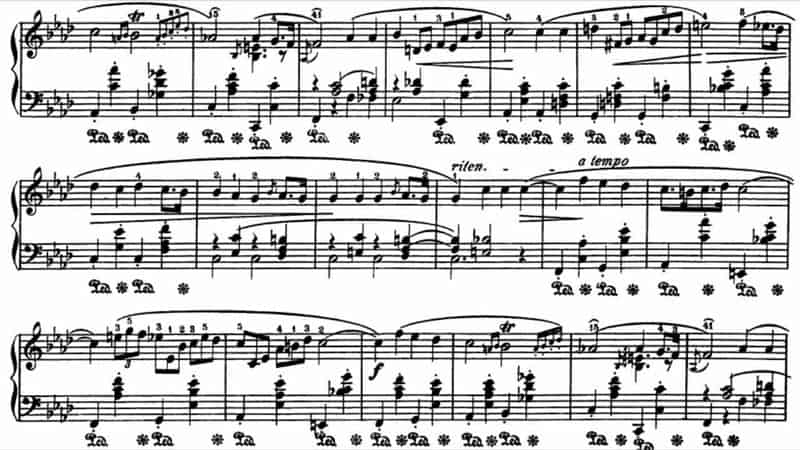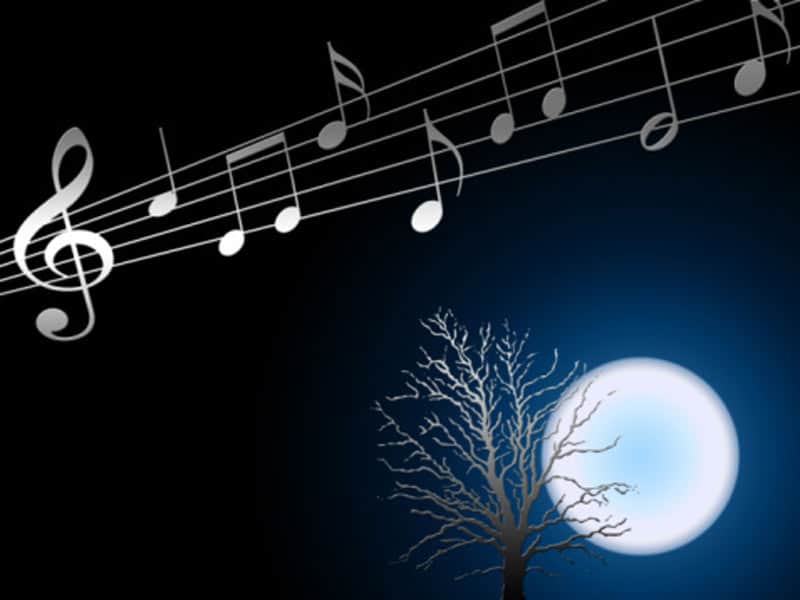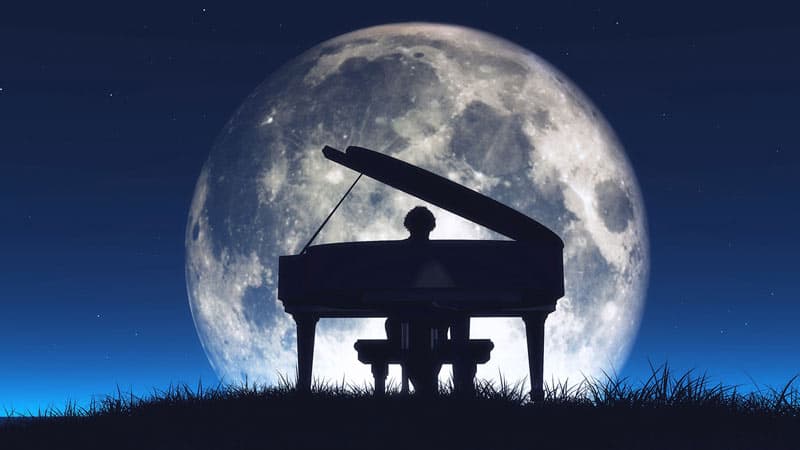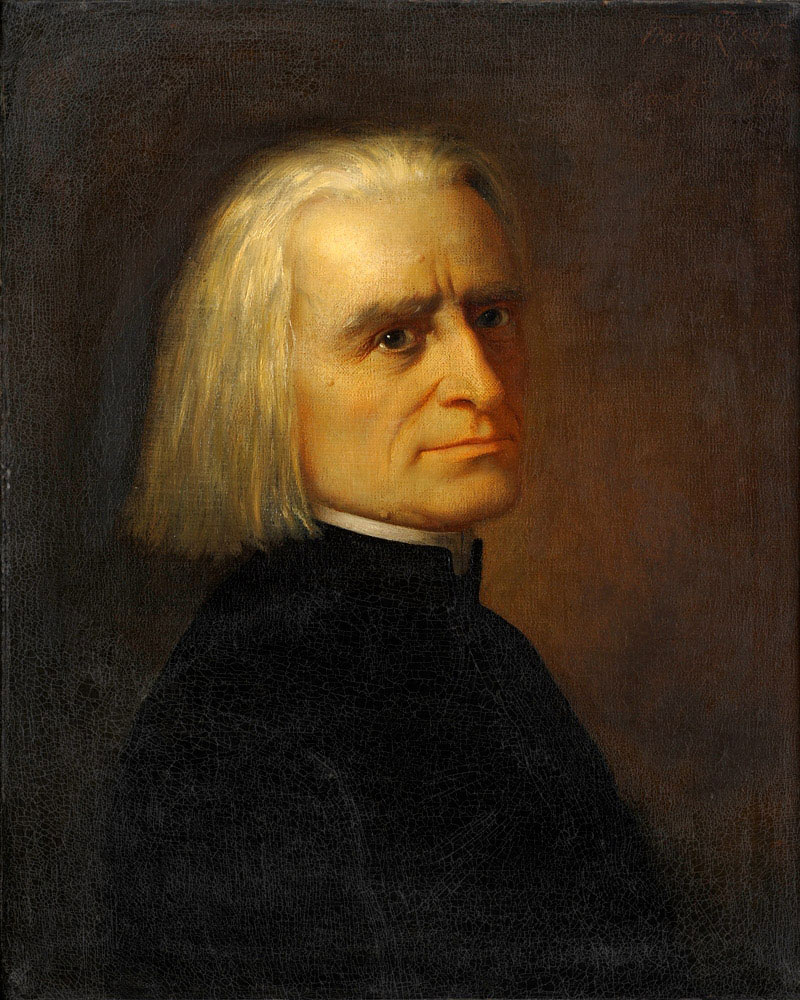
A Nocturne is usually a musical composition that is inspired by, or evocative of, the night. Historically, nocturne is a very old term applied to night Offices and, since the Middle Ages, to divisions in the canonical hour of Matins. The word Nocturne, in music, designates less a specific form of music than a poetic moment, a “musical moment”, of which the night is the pretext. Here is more about this specific exercise that made the great moments of the
A Nocturne, A Moment Of Poetry and of Musical Intimacy
We cannot really call the Nocturne a music style or even a specific form of music. A Nocturne could be defined as a
The name Nocturne is a reference to the religious service in the middle-ages that was composed of three parts of the Matins also called “Tenebres” or Darkness in English during the Holy week.

Certainly, in the eighteenth century, we discovered the word “notturno” or “Nacht-Musik” applied to instrumental suites, entertainment or cassation, decorative music designed for the more or less attentive enjoyment of high society, such as the famous “Little Night Music” (Eine
The notturno was understood, in a sense similar to the serenade, an instrumental piece performed outdoors, at night, in a garden or under the windows of a person that we wanted to celebrate or to

The Maestros Of Nocturnes In History
If we need to review the important virtuosos of Nocturnes, we need to start by the one who is said being the inventor of contemporary Nocturne: John Field.
John Field, The Creator Of Nocturnes
He took piano lessons from Muzio Clementi1. As an early pianist, John Field started out as a rep at Clementi & Co, a reputed pianos maker in Dublin. He takes advantage of his hours of work to learn the practice of his instrument under the direction of his employer. He accompanies his boss on several commercial tours in Europe. In 1803, thanks to a visit to Moscow, he decided to settle in Russia becoming for a time a popular and fashionable teacher. He played extensively throughout Europe during the next 30 years and had great success with one of his E flat piano concerti at a Philharmonic Society concert in London in 1832. He is credited with being one of the earliest to develop the use of the sustaining pedal, both in the prescription of it for his music and in his own performance.

The nocturne is a short, confidential piece, which the Irish composer John Field (1782-1837) was one of the first to cultivate from 1814. Immersed in the night’s climate, the atmosphere favored by romantics, it is often of ABA structure, with a very supple and ornamented melody, accompanied by a left hand with undulating arpeggios. The tempo is usually slow, and the central part is often more agitated.
Frédéric Chopin, Who Made Nocturnes Eternal

Frédéric Chopin was a Polish composer and virtuoso pianist of the Romantic era who wrote primarily for solo piano. He has maintained worldwide renown as a leading musician of his era, one whose “poetic genius was based on a professional technique that was without equal in his generation. He made very popular the Nocturnes as one of the main leading music forms during the Romanticism era.
All of Chopin’s compositions include the piano. Most are for solo piano, though he also wrote two piano concertos, a few chamber pieces, and some 19 songs set to Polish lyrics. His piano writing was technically demanding and expanded the limits of the instrument: his own performances were noted for their nuance and sensitivity. Chopin invented the concept of instrumental; ballade. His major piano works also include mazurkas, waltzes, nocturnes, polonaises, études, impromptus, scherzos, preludes and sonatas, some published only posthumously.

When you listen to a Nocturne by Chopin, your soul starts a relaxing journey that takes you far into your imagination. Each Chopin’s nocturne is an intimate message made of pure emotion. Everybody should have Chopin’s Nocturnes in their discography.
Franz Liszt: From Poetry To The Piano

Franz Liszt wrote music that spoke not only to his own emotions but also to the emotions of others. His music was graspable to listeners, yet complex enough to leave audiences awestruck. Music was for him a mediator among all the forms of artistic expression, translating them all into the universal language of feeling. Liszt’s compositions didn’t follow the typical conventions of the phrase model or any specific form.
Franz Liszt gave life to the juxtaposing emotions of love and death. Through lavish arpeggiations, compelling dynamics, and a humble melody atop complex harmonic structures, Liszt nourished the hearts and minds of nineteenth-century audiences and continues to influence the musicians of today.
John Field, Frédéric Chopin, and Franz Liszt have inspired generations of musicians and composers that pursuit the heritage of Nocturnes. Here are some of the greatest composers of Nocturnes:
- Claude Debussy
- Gabriel Fauré
- Felix Mendelssohn
- Sergei Rachmaninoff
- Kaikhosru Shapurji Sorabji
- Sigismond Thalberg
- Robert Schumann
- Francis Poulenc
- Camille Saint-Saëns
Nocturnes is by far my preferred form of music, from a pure moment of emotion to almost a contemplative moment.
José Amorim
Information sourced by the author for luxuryactivist.com. All content is copyrighted with no reproduction rights available. Images are for illustration purposes only.